Why Bocce?
Bocce is a game that anyone and everyone can play. Players of all ages can compete against each other in a highly competitive environment, all the while enjoying everyone’s company and getting to know each other.
How can I start playing bocce at my facility?
It could be advantageous to introduce some of your members to the game of bocce by setting up a portable court for a trial run. After you choose an evening, Cassidy Athletics arranges everything on the bocce side. The idea would be to invite the most influential and vocal members, who will likely share their positive experiences with others to lead a team for the evening.


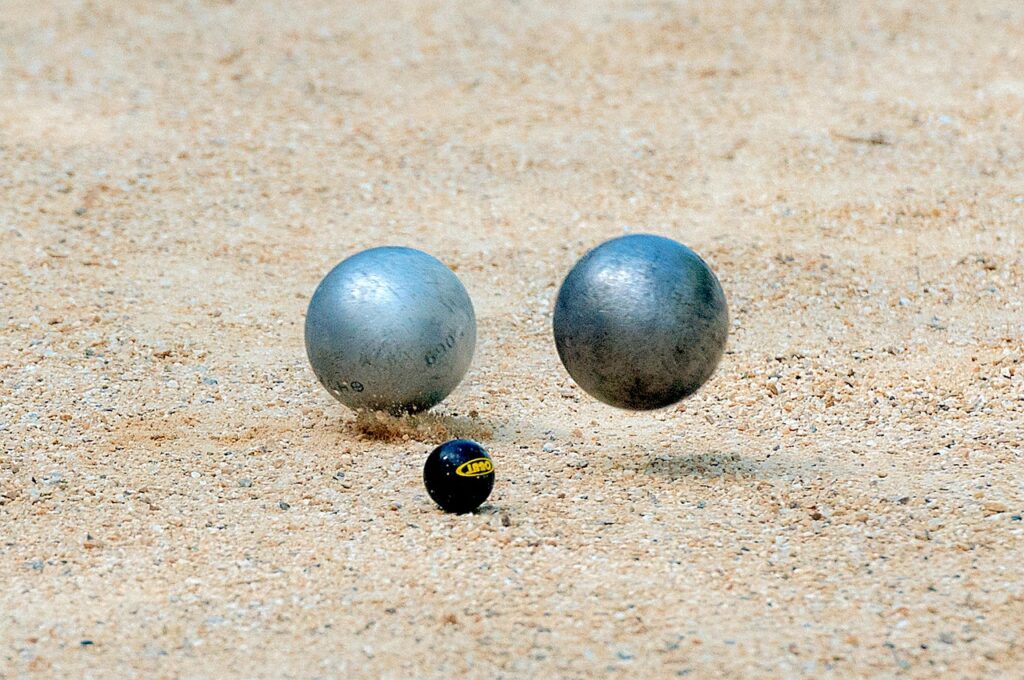
Pallino
When winning the coin toss or after scoring a point, your team has the advantage of deciding where to roll the pallino. Are you just grabbing and rolling or do you think about position and strategy before you do?
Here are some ideas you may want to take into consideration before the pallino roll takes place:
Where is your team’s strength?
Consult with the players on your end and determine where they’re comfortable rolling. If you can’t agree on a location, whoever decides may want to throw first.
Where is your opponents weakness?
Take note of where your opponent has been rolling and consider doing the opposite. Take every chance you can to make them uncomfortable. If they miss a roll, you could be playing 4 balls to 3!
Who should roll the pallino.
Take advantage when you can and have the player who rolls the pallino go first. They will have a great idea of speed control. If their intention is to throw short but the pallino rolls to the middle, they can take the error they made and apply it to their first ball.
If you’d rather be assured of the pallino location after the team decides where it should be, let the player that’s most comfortable with that distance roll.
Wherever the pallino is rolled, make sure your first ball is short of it. This will ensure you do not hit the back wall (if it’s a long throw) and you are able to be knocked in. Balls that roll past the pallino over a few feet may look close, but they are basically out of the frame (unless a raffa shot is executed).
After all said and done, you may have your own idea of who, what, where, when and why but it’s important to think of multiple ideas and choose the one that you and your team are most comfortable with.
Please stay healthy and safe. We look forward to the end of this crisis and hope to see you back on the courts. For now, keep dreaming of your next Bay shot
Wall Ball
Some bocce players may remember what once was, “line em’ up on the wall and start the bocce train!” That’s not the case anymore. With courts that have no sand traps or gutters to hold the balls against the wall, the wall ball offer a challenging shot.
This is only if your league allows the ball to hit the side rails. Some places may call wall ball a disqualification!
When is the right time to throw a wall ball?
Any time an opponent’s team is in your direct line, you may want to consider a wall shot.
If you are uncomfortable with the court speed, the wall offers a bank shot that you may find more consistent than rolling directly at the pallino.
It could make for a great set up shot because your rolls can be used as backboards for your future rolls.
What if an opponent’s ball is near the wall, should you consider a wall shot?
Walk up and take a look (just mind the suggested 30 second rule) and see if there’s enough space to get your ball in-between the ball and the wall. If so, use the opponent’s ball as your target on where you should hit the wall and use correct speed to get your roll “pin high.” A good shot will bounce off the wall, staying away from bumping your opponent’s ball, and finish in a scoring position, short of the pallino.
Wall ball throws are not always recommended, but when perfected they can be used to get your team easy points. If you’re a golfer, think of them like the Phil Mickelson’s flop shot. You know he is always looking for opportunities to use it, and when he finds one, he finishes with a brilliant touch.

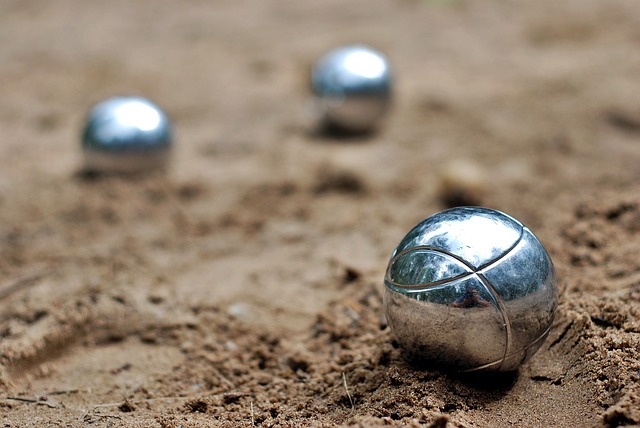
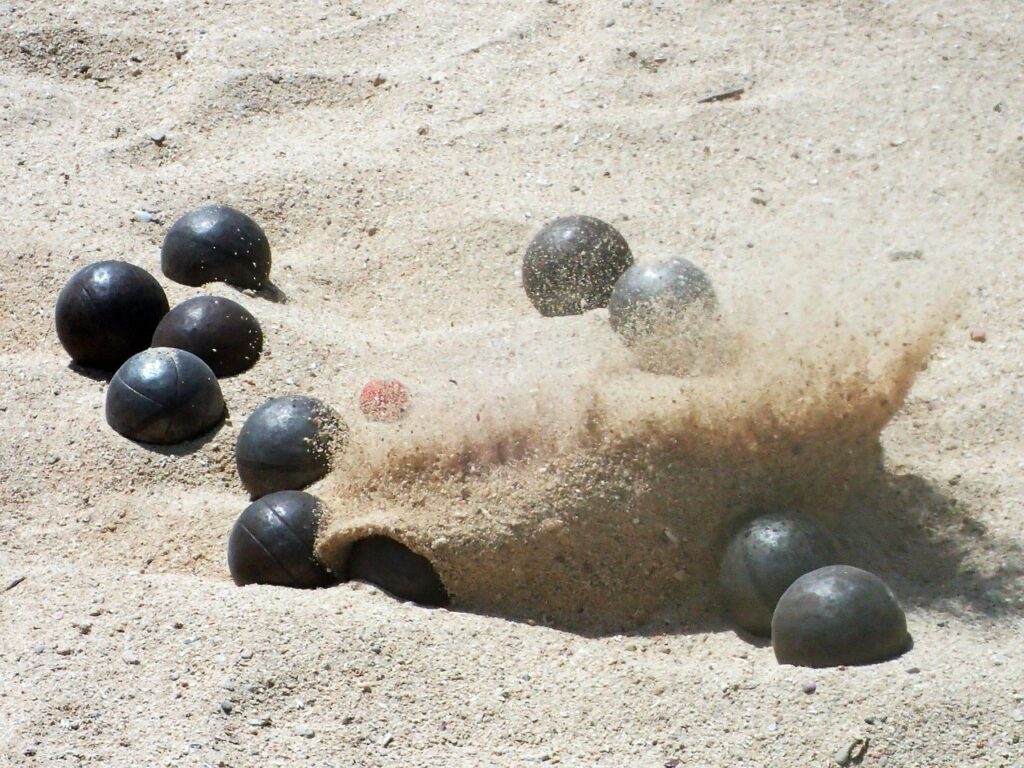
Shooting
Shots come in all different shapes and sizes, from different angles and heights. Just like a baseball stance or a basketball shot, everyone has their own style. One consistency is the finish. To have a successful basketball shot or a pitcher when throwing a strike in baseball, the common denominator is t have a consistent follow through. This applies to your bocce form as well.
Some basics to consider when rolling:
Have a lead foot for aiming your lower body:
It can be your left or right. Whatever you find most comfortable.
Use a finger as your aim and follow though:
If rolling underhand to point, the most common form is to have your thumb on top of the ball to be used to aim at your target.
If rolling a raffa to shoot or a lob shot, the knuckle on your thumb on top of the ball is a great tool to use as your aim.
The recommend form for a pointing shot is to get the ball as close to the surface upon release as possible. This may require you to bend your knees and/or back. Players have dropped to one knee to ensure this happens.
Regardless of which form you are most comfortable with, it is important to stay consistent after your release. Your aiming finger/knuckle should follow through to your target.
As soon as you choose the form that works best for you, the next step is distance control. There are multiple practice tools you can use to perfect this on the court. With a solid base of proper shooting form, you can ensure that practice will in fact make perfect!
Hand Signals
The hand signlas are used to speed up game play and help determine if point was gained or not. Some will chuckle at the idea of the ref dancing teh YMCA in the niddle of the court to indicate who is closer. As soon as players catch on, the game will speed up and you will avoid confusion without having to tell across the coirt to say whose turn it is.
Hand signals:
One hand up in the air (thumb up) = Point
Your roll ended in a scoring position
Opposing team rolls next ball
One hand horizontal to the ground = No Point
Your ball did not end in scoring position and is still father away
Same team keeps rolling
These signals have helped speed up the game and end controversy over who should roll next. Try it out with your team next time you’re on the court and see if it helps. When the match happens and it’s used on a consistent basis, you’ll notice the game will flow a lot faster than most.
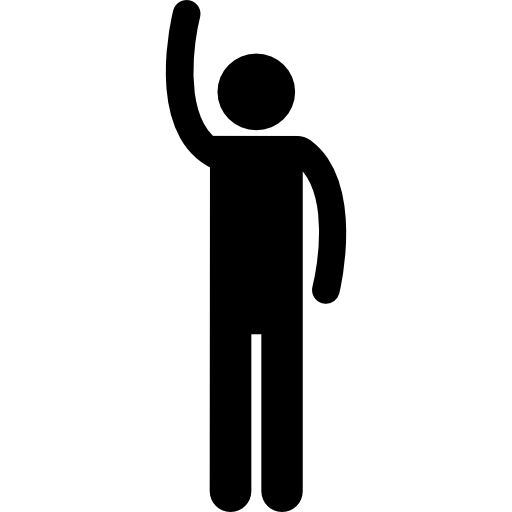
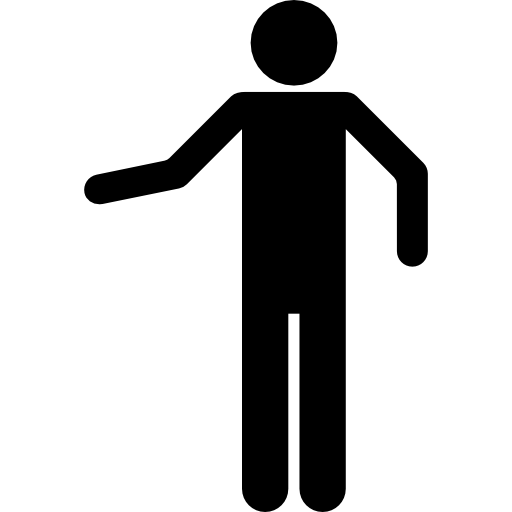
Do you want to learn more?
Follow along